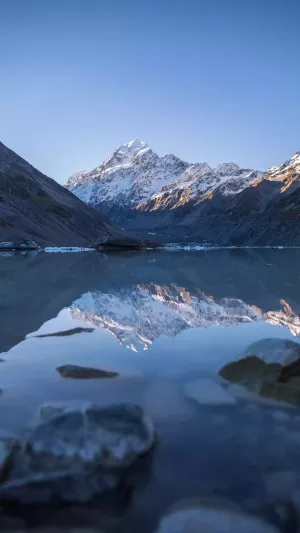Mountaineering itself is a very interesting sport. In the process of climbing, you can enjoy the surrounding natural scenery and feel the magic of nature. In addition, you can also experience the change of mood when climbing and the pleasure of enjoying the high scenery after reaching the top. It is very common to climb ordinary mountains. Have you ever experienced climbing snow mountains? If you want to go to the snow mountain, you must be fully prepared, and some precautions must be known in advance!
First of all, there must be sufficient psychological preparation. Although it is not a choice of life and death, there are certain risks. If you are afraid when facing the majestic snow-capped mountains, your steps will inevitably retreat. If you want to challenge, you must overcome fear. In addition, before climbing, you must have enough experience in outdoor life to develop your ability to respond to various unexpected problems.
Look for the official climbing report of the relevant mountain and read it carefully, instead of making judgments based on the intuitive feelings of others. It's best to look for an agency with a proven track record of mountaineering services through a legitimate commercial mountaineering website. At the same time, learn more about the potential hazards of high mountains, including severe weather, strong sunlight, snow and ice, etc.
Then pay special attention to the choice of equipment for mountaineering. Daily equipment includes daily utensils and supplies. Because a mountaineering activity requires a long time in the high mountain area, sometimes it can even be as long as two months, so all kinds of supplies must be carried. If you are exploring mountaineering, you should also prepare cold clothing, wind and raincoats, alpine shoes and some luggage. In addition, you can also prepare some technical equipment in advance, such as ice axes, seat belts, main ropes, auxiliary ropes and other items.
High altitudes often bring low temperatures and strong winds, coupled with the many changes in the mountain climate, which further increases the difficulty of mountaineering. Physical fitness is not something that can be achieved overnight. It is a gradual process. From weekend hiking, camping and wilderness hiking to rock climbing, you must basically ensure that you are in an active state of exercise within six months. If you can complete a 20-kilometer mileage and a 2,000-meter climbing route on weekends within 8 hours, then such physical fitness is enough to deal with a 5,000-meter entry-level snow-capped mountain.
In the mountains, in the event of severe weather such as snow, dense fog, strong wind, etc., you should stop traveling, hide under the cliff or in the cave, and leave when the weather improves.
Don't overestimate your physical strength when traveling in snowy mountains. When you are tired, you should rest in time. Don't wait until you get to the point where you're almost exhausted, it's not easy to regain your strength. The correct way is to take a big step, then relax and walk slowly for a while, or stop and rest for a while to adjust your breathing.
In short, in the process of climbing, we must pay special attention to safety. Although the snow-capped mountains are right in front of you, you can only get close to its beauty if you are fully prepared. Humans are not born to challenge nature, but when you measure it with your feet, you will truly feel its majesty.





